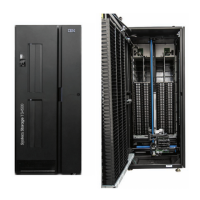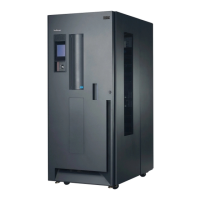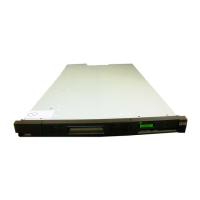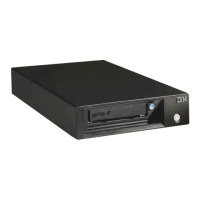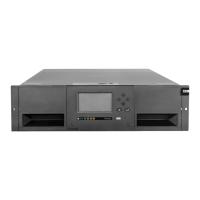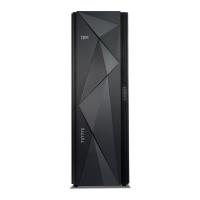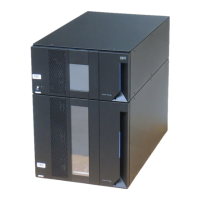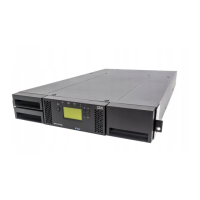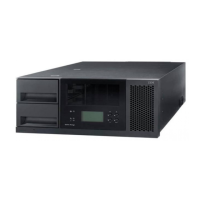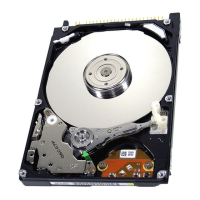FID187
A14M0115
>OPERATOROPTIONS
CALL FORSERVICE
AD38 AD382B3A
Figure 35: Error message example
When the FRU identier (FID) 1 and the severity code 2 are presented, the CE uses the FID number 3
as a starting point to begin “FID entry point” on page 6. See “Service and Media Information messages
(SIMs and MIMs)” on page 39 for a description of the severity codes. The message area 4 , 5 , and 6
hex data is support information to determine whether the fault is caused by microcode. 4 represents
the rst FSC that caused the FID. 5 represents either the last FSC or the flag data. The rst character in
6 represents part of the model number. The last 3 characters represent the microcode link. A
corresponding SIM is transmitted to the initiator. Also, a TapeAlert is available to the initiator.
• Attention messages
Attention (ATTN) messages indicate error conditions that customer personnel might be able to resolve.
• Routine messages
Routine messages consist of messages that are received from the host, for example, Mount, and
messages from the device (for example, *CLEAN).
To generate the Clean message, the device monitors the number of megabytes processed and the
number of mounts for each drive. When either of these factors reach a threshold, the device displays a
Clean message. The clean message is maintained across device power-on reset conditions.
The routine messages that are received through the Display Message command consist of mount
messages, demount messages, and general (custom) messages.
• FID2 messages 2
An FID2 message indicates that the drive is in a degraded state. For example, FID2 84 can indicate
degraded hardware performance. The drive can still be used, but is in a less available state.
• FID3 messages 2
An FID3 message indicates that the drive is in a degraded state. The drive can still be used, but is in a
more available state than for an FID2 type of fault.
• FID4 messages 2
An FID4 message indicates that some service circuitry failed. For example, FID4 85 can indicate that a
parity-check circuit failed.
Virtual Operator panel menus
The Virtual Operator panel displays drive information for the CE's consideration, and allows the CE to
communicate with the drive. The CE is presented with menu-driven options for drive operation.
The remainder of this chapter is divided in the following manner -
• “Virtual Operator panel menu trees” on page 88
• “Operator Mode menus” on page 97 (available to operator and CE)
• “CE Offline Mode menus” on page 107
• “CE Online Mode menus” on page 151 (available only to CE)
Note: The service panel menus are intended only for CEs. You access the menu groups by pressing
Change Mode on the service panel.
Virtual Operator panel
87
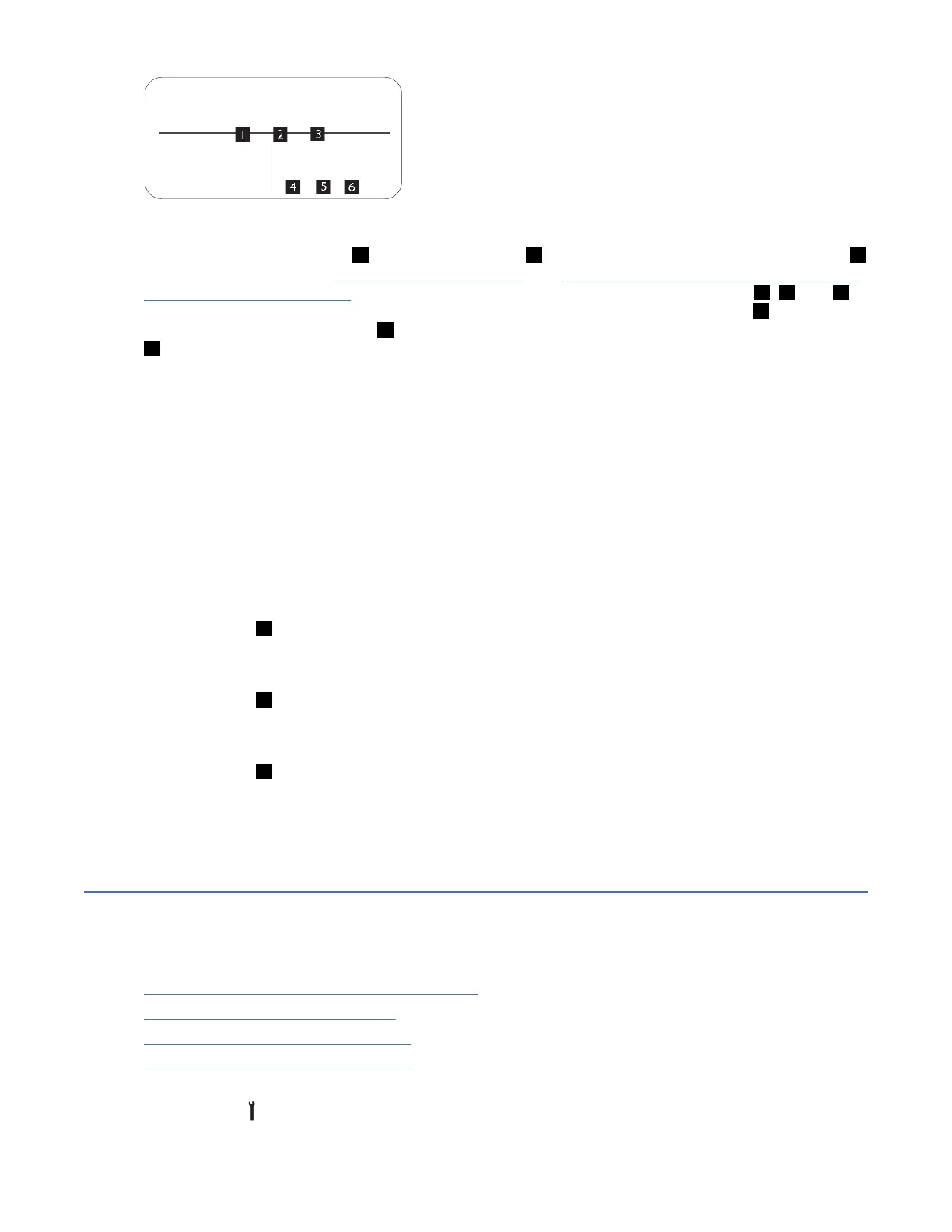